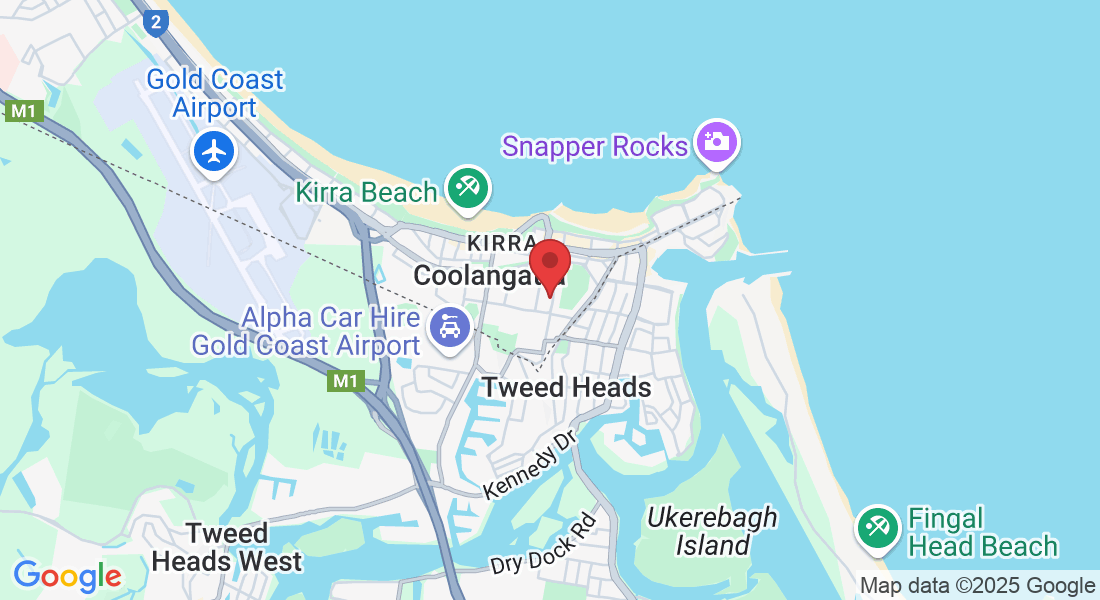FAQs
FAQs
Reiki
What is Reiki?
Reiki (pronounced Ray-Key) is a highly intelligent healing energy. It is gentle, natural form of energy healing that promotes deep relaxation, inner balance, and emotional wellbeing. It works on the body, mental and emotional bodies. It works by connecting with the body’s natural life force, helping it to release what no longer serves and restore what is needed. It’s safe, non-invasive, and can be received by anyone, at any age.
Do you use Reiki in your treatments?
Yes, it is always present, no matter how I touch a body. Whether I’m working on your feet, ears, face, or spine, Reiki is flowing through my hands. It supports the healing process at every level, physically, emotionally, and energetically. Even if I don’t say the word Reiki in a session, know that this peaceful, healing energy is always present and part of your treatment.
What does Reiki feel like?
Most people feel a sense of deep calm, warmth, or gentle waves moving through the body. Some feel tingles, lightness, or release. Others simply fall into a peaceful rest. Reiki meets you exactly where you are — whether you need grounding, lifting, or emotional support.
Is Reiki connected to a religion or belief system?
No. Reiki is spiritual, not religious, and requires no specific belief. It works whether or not you "believe" in it, because it simply supports the body’s natural healing intelligence. Clients from all walks of life benefit from Reiki.
Can Reiki help with stress or emotional pain?
Yes, absolutely. Reiki is one of the most nurturing and calming ways to release stress, ease anxiety, and feel emotionally supported without needing to talk or explain. Many clients say they feel lighter and more centred, even when life feels overwhelming.
What is Distance Reiki?
How does that work? Reiki is not limited by time or location. I can send healing energy to you wherever you are, whether you're at home, at work, or even in a hospital bed or overseas. Distance Reiki is especially helpful when you can’t come in person, yet still need support. The experience is just as powerful, and often just as felt.
What happens in a Distance Reiki session?
We agree on a time. You simply lie down or rest quietly, you don’t need to do anything. I focus the Reiki energy towards your whole being, tuning into what’s needed, just as I would in person. After the session, you may notice a change.
What can Reiki help with?
Reiki doesn’t “cure” conditions, but it supports your body and mind in responding to them more peacefully. It may help with:
relaxation and sleep
emotional healing or grief
support after illness or surgery
clearing overwhelm and finding clarity
reconnecting with your inner calm
How often should I have Reiki?
That depends on your situation. Some benefit from a single session, while others find regular sessions helpful for ongoing support. I always recommend following how your body feels. Trust your inner wisdom, and I’m here to guide you.
How do I book a Distance Reiki session?
Just get in touch with me or book online. We can organise or find a time that suits you — no matter where you are in the world. Healing knows no borders, and Reiki will find its way to you with ease.
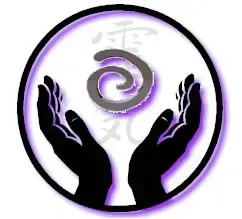
Reflexology - Foot, Facial and Ears
What is Reflexology and how does it work?
Reflexology is a deeply relaxing and nurturing therapy that involves applying gentle pressure to specific points on the feet, hands, face, or ears. These points correspond to different organs, glands, and systems in the body. By stimulating them, we support the body’s natural ability to reset, rebalance, and restore harmony — physically, mentally, and emotionally.
Can Reflexology really improve my health?
Yes, and in ways you might not expect. Many clients report better sleep, improved digestion, reduced stress, less pain, and increased energy. It’s not a medical treatment, but rather a powerful support system that encourages the body to function more smoothly. The results often speak for themselves.
Is it only for people with health problems?
Not at all. Reflexology is for anyone wanting to feel more relaxed, balanced, and energised — whether you're facing a health challenge or simply want to maintain your wellbeing. In fact, it’s a beautiful act of self-care that suits all ages, from babies to elders.
What does it feel like? Is it painful?
Most people find Reflexology incredibly calming — many fall asleep during their session! The pressure is tailored to your needs. You may feel tender spots, but these are often areas that need attention. The experience is gentle, respectful, and deeply restorative.
What’s the difference between working on the feet, hands, face, or ears?
Each area has a full map of your body.
Foot Reflexology is grounding and ideal for full-body support.
Hand Reflexology is great for quick self-help and can be very effective for upper body issues.
Facial Reflexology supports inner organs and the brain, and helps you look and feel more radiant.
Ear Reflexology connects directly with the nervous system and is beautifully calming. Some people love combining areas for even deeper results.
How many sessions do I need?
Everyone is different. Some feel a shift after just one session, while others benefit from a series of treatments to experience lasting change. I often recommend starting with weekly sessions for 4 to 6 weeks to allow your body to find its new balance. After that monthly treatments will keep supporting the changes. It is like brushing your teeth every day.
Can Reflexology help with stress or emotional tension?
Absolutely. Stress can affect every system in the body. Reflexology helps quiet the nervous system, easing tension and supporting emotional resilience. It’s a wonderful way to pause, reconnect, and let go, without needing to say a word.
Why haven’t I heard about this before?
That’s a great question — Reflexology is more well-known in some countries or locations than others. But it has been practiced for thousands of years, and now modern research is catching up, showing how it activates areas of the brain and supports body-wide balance.
What if I don’t believe in it?
You don’t have to believe in Reflexology for it to work. The body is wise and responds naturally to touch. Many first-time clients are surprised by how much they feel and how relaxed they are after just one session.
What’s the best way to get started?
The best way is simply to book a session. You don’t need to understand everything — just be open to the possibility that your body knows how to heal when given the chance. The vast majority of clients notice the benefits after an initial treatment but this depends on what their health issues are and how much medication they are on. When it is a long lasting condition with lots of medication, one treatment may not show much change, it will take time.
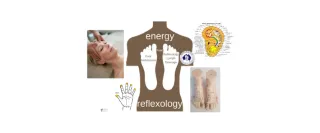
Neuro Reflexology
What is Neuro Reflexology?
Neuro Reflexology is a gentle yet powerful method that works on the face, skull, and nervous system. It uses specific pressure points and micro-movements designed to support how the brain, nerves, and body communicate. It helps the mind quieten, the body soften, and the nervous system reset itself.
What does Neuro Reflexology help with?
This treatment is especially effective for people experiencing:
Stress and anxiety
Overthinking and mental fatigue
Emotional trauma and PTSD
Sleep issues or nervous system imbalance
It’s also used as a supportive therapy for Dementia, Alzheimer’s and Parkinson’s, providing a safe space for calming the nervous system and gently activating areas of the brain.
How is it different from regular Reflexology?
Neuro Reflexology focuses on the brain and nervous system using the face and skull as access points. It goes deeper than just relaxation. With precise techniques, it can gently calm an overstimulated brain, soothe emotional tension, and rewire patterns of stress or trauma held in the body — without needing to talk about it.
Does it hurt or feel intense?
Not at all. Most people describe it as deeply soothing, even meditative. You may feel subtle sensations as your nervous system begins to let go of tension, but the treatment is always gentle, respectful, and tailored to your needs.
What is a session like?
You lie down comfortably while I work on your face, scalp. I use specific points and sequences — completely customised to your situation — to bring balance and calm to your system. Many people feel a deep sense of peace during or after a session.
Can it really help with trauma or PTSD?
Yes. Trauma often lives in the body, not just the mind. Neuro Reflexology helps release stored emotional tension by calming the vagus nerve, balancing the brain, and allowing your nervous system to come out of fight-or-flight. It’s a gentle, non-verbal approach that’s supportive for those who’ve been through difficult experiences.
How often should I have Neuro Reflexology?
For general stress, overthinking, and emotional support, once a week or fortnight is often enough to create noticeable change. However, for clients with Dementia, Alzheimer’s or Parkinson’s, I recommend three 30-minute sessions a week, ongoing for several months. This frequency gives the nervous system time to re-pattern itself and build stability over time.
Can this help my parent or partner with memory or movement issues?
Absolutely. Many carers are surprised at the shifts in focus, calm, facial expression, and emotional response. While we can’t promise outcomes, we work with the nervous system’s ability to create new patterns. It’s gentle, non-invasive, and meets the person exactly where they are.
Do I need to believe in it for it to work?
No, the body responds naturally. This is not about belief, but about giving the brain and body space to do what they are naturally designed to do: regulate, reset, and reconnect.
How do I start?
The best way is to simply book a session and experience it. Whether you're seeking clarity, calm, or deeper support for a loved one, Neuro Reflexology offers a path to healing that is gentle, compassionate, and grounded in results.
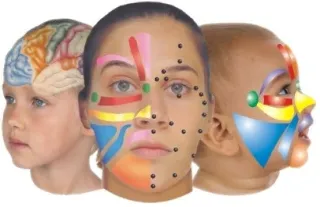
Foot Mobilization
What is Foot Mobilisation?
Foot Mobilisation is a gentle, hands-on technique that helps improve the function and alignment of the feet. It was developed by a leading Australian podiatrist and is designed to restore natural movement in the joints of the feet and ankles — helping the whole body move more freely.
Are you a podiatrist?
No, I’m not a podiatrist. But I am fully qualified to practise Foot Mobilisation as part of my holistic treatments. I’ve been trained in this specific method and have been offering it since 2002, with wonderful results for clients of all ages.
What does a Foot Mobilisation session involve?
I use gentle movements, stretches, and specific techniques to mobilise the joints in your feet and ankles. This helps to release stiffness, realign structures, and improve how the feet support your entire body. Sessions are non-invasive, comfortable, and deeply effective.
Who can benefit from Foot Mobilisation?
It’s ideal for anyone who experiences: Foot stiffness or pain Poor posture or balance issues Knee, hip or lower back discomfort Difficulty walking or standing for long Tension held in the body due to poor foot function Even if you don’t have pain, it can be a beautiful support for maintaining mobility and balance — especially as we age.
How is it different from Reflexology?
Foot Mobilisation works directly with the structure and joints of the feet — while Reflexology works with reflex points connected to body systems and organs. They complement each other beautifully. Many clients experience even better results when both are included in a session.
Is it painful or intense?
No. The technique is gentle and respectful. Some areas may feel tight or sensitive, but the goal is to invite movement back into the foot, not to force anything. Most people say their feet feel lighter, more alive, and freer after just one session.
Can Foot Mobilisation improve my overall posture?
Yes, absolutely. Your feet are the foundation of your entire body. When your feet move better, the rest of your body often follows — including knees, hips, and spine. You may find walking becomes easier, standing more natural, and even long-held tension begins to ease.
Is this suitable for older adults or people with limited mobility?
Yes, very much so. The techniques are easily adjusted to suit your needs. Many older clients have found new freedom in their feet — and their lives — through regular foot mobilisation sessions.
How often should I come for a session?
That depends on your needs. For acute issues, weekly sessions may be helpful for a short period. For maintenance, once a month can be enough to support your mobility and wellbeing over time. We’ll work together to find the right rhythm for you.
How do I start?
You can book a session or ask to include Foot Mobilisation within your reflexology or Spinal Flow treatment. It’s a powerful way to support your entire body — starting from the ground up.
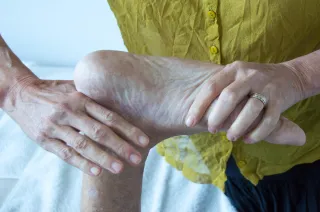
Spinal Flow
What is Spinal Flow?
Spinal Flow is a gentle, hands-on technique that supports your body to release stress and tension. It releases life time accumulated physical, emotional and chemcial blockages stored in the spine and nervous system. It helps your body remember how to heal itself, naturally, safely, and without force. People often describe it as deeply relaxing, calming, and sometimes even life-changing.
How does it work?
Your spine houses your nervous system, the communication highway between your brain and every organ, gland, and cell. When stress builds up (physically, emotionally, or chemically), the flow of messages between body and brain can be disrupted. Spinal Flow works by gently accessing specific points on the spine that help the nervous system release stored tension, so the brain can send and receive signals clearly again.
What can Spinal Flow help with?
It’s not a treatment for conditions, but many clients have experienced improvements in:
Chronic stress, anxiety, or overwhelm
Tightness in the neck, back, hips, or shoulders
Physical realignment
Digestive or hormonal imbalances
Sleep, clarity, and emotional resilience
Feeling stuck, burnt out, or disconnected from the body
What happens in a session?
You lie fully clothed on a massage table, face down. I gently touch specific access points on your spine, no manipulation, no cracking, and work with your body’s own intelligence to release blockages. Every session is tailored to you, and each one is unique.
Is it painful?
Not at all. The technique is incredibly gentle. Clients often drop into a deeply relaxed state, and many report feeling lighter, freer, or more energised after a session. Sometimes old emotions surface and release — but always in a safe, supported space.
How is it different from massage or chiropractic care?
Spinal Flow is not about adjusting bones or massaging muscles. It works with the underlying stress patterns held in the nervous system. It’s more like teaching the body to heal itself, rather than doing the healing for it.
Can it help with emotional or energetic blocks?
Absolutely. Your spine and nervous system carry your life story — including stress, emotional pain, and trauma. Spinal Flow helps release these stored experiences, so the body can return to a more open, connected, and balanced state.
How many sessions do I need?
That depends on your goals and what and how long your body has been holding issues. I usually recommend an initial series of three 30-minute sessions per week for four weeks to support lasting change. Ongoing maintenance sessions can then help your body stay balanced and resilient.
Can you treat two people at once?
Yes, Spinal Flow can be shared in the same space with two people who are close , such as family members, partners, or friends. It can also be done with two people who don't know each other as there is not sharing private issues. It can be a beautiful shared experience, especially for those seeking emotional support or healing together.
How do I book?
You can simply book a session through my website or get in touch directly. Whether you're feeling physically tight, emotionally flat, or just not quite yourself, Spinal Flow can support you back to feeling more like you again.
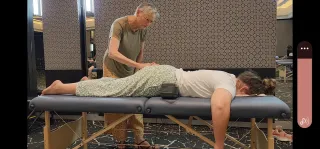
Reiki
What is Reiki?
Reiki (pronounced Ray-Key) is a highly intelligent healing energy. It is gentle, natural form of energy healing that promotes deep relaxation, inner balance, and emotional wellbeing. It works on the body, mental and emotional bodies. It works by connecting with the body’s natural life force, helping it to release what no longer serves and restore what is needed. It’s safe, non-invasive, and can be received by anyone, at any age.
Do you use Reiki in your treatments?
Yes, it is always present, no matter how I touch a body. Whether I’m working on your feet, ears, face, or spine, Reiki is flowing through my hands. It supports the healing process at every level, physically, emotionally, and energetically. Even if I don’t say the word Reiki in a session, know that this peaceful, healing energy is always present and part of your treatment.
What does Reiki feel like?
Most people feel a sense of deep calm, warmth, or gentle waves moving through the body. Some feel tingles, lightness, or release. Others simply fall into a peaceful rest. Reiki meets you exactly where you are — whether you need grounding, lifting, or emotional support.
Is Reiki connected to a religion or belief system?
No. Reiki is spiritual, not religious, and requires no specific belief. It works whether or not you "believe" in it, because it simply supports the body’s natural healing intelligence. Clients from all walks of life benefit from Reiki.
Can Reiki help with stress or emotional pain?
Yes, absolutely. Reiki is one of the most nurturing and calming ways to release stress, ease anxiety, and feel emotionally supported without needing to talk or explain. Many clients say they feel lighter and more centred, even when life feels overwhelming.
What is Distance Reiki?
How does that work? Reiki is not limited by time or location. I can send healing energy to you wherever you are, whether you're at home, at work, or even in a hospital bed or overseas. Distance Reiki is especially helpful when you can’t come in person, yet still need support. The experience is just as powerful, and often just as felt.
What happens in a Distance Reiki session?
We agree on a time. You simply lie down or rest quietly, you don’t need to do anything. I focus the Reiki energy towards your whole being, tuning into what’s needed, just as I would in person. After the session, you may notice a change.
What can Reiki help with?
Reiki doesn’t “cure” conditions, but it supports your body and mind in responding to them more peacefully. It may help with:
relaxation and sleep
emotional healing or grief
support after illness or surgery
clearing overwhelm and finding clarity
reconnecting with your inner calm
How often should I have Reiki?
That depends on your situation. Some benefit from a single session, while others find regular sessions helpful for ongoing support. I always recommend following how your body feels. Trust your inner wisdom, and I’m here to guide you.
How do I book a Distance Reiki session?
Just get in touch with me or book online. We can organise or find a time that suits you — no matter where you are in the world. Healing knows no borders, and Reiki will find its way to you with ease.

Reflexology - Foot, Facial and Ears
What is Reflexology and how does it work?
Reflexology is a deeply relaxing and nurturing therapy that involves applying gentle pressure to specific points on the feet, hands, face, or ears. These points correspond to different organs, glands, and systems in the body. By stimulating them, we support the body’s natural ability to reset, rebalance, and restore harmony — physically, mentally, and emotionally.
Can Reflexology really improve my health?
Yes, and in ways you might not expect. Many clients report better sleep, improved digestion, reduced stress, less pain, and increased energy. It’s not a medical treatment, but rather a powerful support system that encourages the body to function more smoothly. The results often speak for themselves.
Is it only for people with health problems?
Not at all. Reflexology is for anyone wanting to feel more relaxed, balanced, and energised — whether you're facing a health challenge or simply want to maintain your wellbeing. In fact, it’s a beautiful act of self-care that suits all ages, from babies to elders.
What does it feel like? Is it painful?
Most people find Reflexology incredibly calming — many fall asleep during their session! The pressure is tailored to your needs. You may feel tender spots, but these are often areas that need attention. The experience is gentle, respectful, and deeply restorative.
What’s the difference between working on the feet, hands, face, or ears?
Each area has a full map of your body.
Foot Reflexology is grounding and ideal for full-body support.
Hand Reflexology is great for quick self-help and can be very effective for upper body issues.
Facial Reflexology supports inner organs and the brain, and helps you look and feel more radiant.
Ear Reflexology connects directly with the nervous system and is beautifully calming. Some people love combining areas for even deeper results.
How many sessions do I need?
Everyone is different. Some feel a shift after just one session, while others benefit from a series of treatments to experience lasting change. I often recommend starting with weekly sessions for 4 to 6 weeks to allow your body to find its new balance. After that monthly treatments will keep supporting the changes. It is like brushing your teeth every day.
Can Reflexology help with stress or emotional tension?
Absolutely. Stress can affect every system in the body. Reflexology helps quiet the nervous system, easing tension and supporting emotional resilience. It’s a wonderful way to pause, reconnect, and let go, without needing to say a word.
Why haven’t I heard about this before?
That’s a great question — Reflexology is more well-known in some countries or locations than others. But it has been practiced for thousands of years, and now modern research is catching up, showing how it activates areas of the brain and supports body-wide balance.
What if I don’t believe in it?
You don’t have to believe in Reflexology for it to work. The body is wise and responds naturally to touch. Many first-time clients are surprised by how much they feel and how relaxed they are after just one session.
What’s the best way to get started?
The best way is simply to book a session. You don’t need to understand everything — just be open to the possibility that your body knows how to heal when given the chance. The vast majority of clients notice the benefits after an initial treatment but this depends on what their health issues are and how much medication they are on. When it is a long lasting condition with lots of medication, one treatment may not show much change, it will take time.

Neuro Reflexology
What is Neuro Reflexology?
Neuro Reflexology is a gentle yet powerful method that works on the face, skull, and nervous system. It uses specific pressure points and micro-movements designed to support how the brain, nerves, and body communicate. It helps the mind quieten, the body soften, and the nervous system reset itself.
What does Neuro Reflexology help with?
This treatment is especially effective for people experiencing:
Stress and anxiety
Overthinking and mental fatigue
Emotional trauma and PTSD
Sleep issues or nervous system imbalance
It’s also used as a supportive therapy for Dementia, Alzheimer’s and Parkinson’s, providing a safe space for calming the nervous system and gently activating areas of the brain.
How is it different from regular Reflexology?
Neuro Reflexology focuses on the brain and nervous system using the face and skull as access points. It goes deeper than just relaxation. With precise techniques, it can gently calm an overstimulated brain, soothe emotional tension, and rewire patterns of stress or trauma held in the body — without needing to talk about it.
Does it hurt or feel intense?
Not at all. Most people describe it as deeply soothing, even meditative. You may feel subtle sensations as your nervous system begins to let go of tension, but the treatment is always gentle, respectful, and tailored to your needs.
What is a session like?
You lie down comfortably while I work on your face, scalp. I use specific points and sequences — completely customised to your situation — to bring balance and calm to your system. Many people feel a deep sense of peace during or after a session.
Can it really help with trauma or PTSD?
Yes. Trauma often lives in the body, not just the mind. Neuro Reflexology helps release stored emotional tension by calming the vagus nerve, balancing the brain, and allowing your nervous system to come out of fight-or-flight. It’s a gentle, non-verbal approach that’s supportive for those who’ve been through difficult experiences.
How often should I have Neuro Reflexology?
For general stress, overthinking, and emotional support, once a week or fortnight is often enough to create noticeable change. However, for clients with Dementia, Alzheimer’s or Parkinson’s, I recommend three 30-minute sessions a week, ongoing for several months. This frequency gives the nervous system time to re-pattern itself and build stability over time.
Can this help my parent or partner with memory or movement issues?
Absolutely. Many carers are surprised at the shifts in focus, calm, facial expression, and emotional response. While we can’t promise outcomes, we work with the nervous system’s ability to create new patterns. It’s gentle, non-invasive, and meets the person exactly where they are.
Do I need to believe in it for it to work?
No, the body responds naturally. This is not about belief, but about giving the brain and body space to do what they are naturally designed to do: regulate, reset, and reconnect.
How do I start?
The best way is to simply book a session and experience it. Whether you're seeking clarity, calm, or deeper support for a loved one, Neuro Reflexology offers a path to healing that is gentle, compassionate, and grounded in results.

Foot Mobilization
What is Foot Mobilisation?
Foot Mobilisation is a gentle, hands-on technique that helps improve the function and alignment of the feet. It was developed by a leading Australian podiatrist and is designed to restore natural movement in the joints of the feet and ankles — helping the whole body move more freely.
Are you a podiatrist?
No, I’m not a podiatrist. But I am fully qualified to practise Foot Mobilisation as part of my holistic treatments. I’ve been trained in this specific method and have been offering it since 2002, with wonderful results for clients of all ages.
What does a Foot Mobilisation session involve?
I use gentle movements, stretches, and specific techniques to mobilise the joints in your feet and ankles. This helps to release stiffness, realign structures, and improve how the feet support your entire body. Sessions are non-invasive, comfortable, and deeply effective.
Who can benefit from Foot Mobilisation?
It’s ideal for anyone who experiences: Foot stiffness or pain Poor posture or balance issues Knee, hip or lower back discomfort Difficulty walking or standing for long Tension held in the body due to poor foot function Even if you don’t have pain, it can be a beautiful support for maintaining mobility and balance — especially as we age.
How is it different from Reflexology?
Foot Mobilisation works directly with the structure and joints of the feet — while Reflexology works with reflex points connected to body systems and organs. They complement each other beautifully. Many clients experience even better results when both are included in a session.
Is it painful or intense?
No. The technique is gentle and respectful. Some areas may feel tight or sensitive, but the goal is to invite movement back into the foot, not to force anything. Most people say their feet feel lighter, more alive, and freer after just one session.
Can Foot Mobilisation improve my overall posture?
Yes, absolutely. Your feet are the foundation of your entire body. When your feet move better, the rest of your body often follows — including knees, hips, and spine. You may find walking becomes easier, standing more natural, and even long-held tension begins to ease.
Is this suitable for older adults or people with limited mobility?
Yes, very much so. The techniques are easily adjusted to suit your needs. Many older clients have found new freedom in their feet — and their lives — through regular foot mobilisation sessions.
How often should I come for a session?
That depends on your needs. For acute issues, weekly sessions may be helpful for a short period. For maintenance, once a month can be enough to support your mobility and wellbeing over time. We’ll work together to find the right rhythm for you.
How do I start?
You can book a session or ask to include Foot Mobilisation within your reflexology or Spinal Flow treatment. It’s a powerful way to support your entire body — starting from the ground up.

Spinal Flow
What is Spinal Flow?
Spinal Flow is a gentle, hands-on technique that supports your body to release stress and tension. It releases life time accumulated physical, emotional and chemcial blockages stored in the spine and nervous system. It helps your body remember how to heal itself, naturally, safely, and without force. People often describe it as deeply relaxing, calming, and sometimes even life-changing.
How does it work?
Your spine houses your nervous system, the communication highway between your brain and every organ, gland, and cell. When stress builds up (physically, emotionally, or chemically), the flow of messages between body and brain can be disrupted. Spinal Flow works by gently accessing specific points on the spine that help the nervous system release stored tension, so the brain can send and receive signals clearly again.
What can Spinal Flow help with?
It’s not a treatment for conditions, but many clients have experienced improvements in:
Chronic stress, anxiety, or overwhelm
Tightness in the neck, back, hips, or shoulders
Physical realignment
Digestive or hormonal imbalances
Sleep, clarity, and emotional resilience
Feeling stuck, burnt out, or disconnected from the body
What happens in a session?
You lie fully clothed on a massage table, face down. I gently touch specific access points on your spine, no manipulation, no cracking, and work with your body’s own intelligence to release blockages. Every session is tailored to you, and each one is unique.
Is it painful?
Not at all. The technique is incredibly gentle. Clients often drop into a deeply relaxed state, and many report feeling lighter, freer, or more energised after a session. Sometimes old emotions surface and release — but always in a safe, supported space.
How is it different from massage or chiropractic care?
Spinal Flow is not about adjusting bones or massaging muscles. It works with the underlying stress patterns held in the nervous system. It’s more like teaching the body to heal itself, rather than doing the healing for it.
Can it help with emotional or energetic blocks?
Absolutely. Your spine and nervous system carry your life story — including stress, emotional pain, and trauma. Spinal Flow helps release these stored experiences, so the body can return to a more open, connected, and balanced state.
How many sessions do I need?
That depends on your goals and what and how long your body has been holding issues. I usually recommend an initial series of three 30-minute sessions per week for four weeks to support lasting change. Ongoing maintenance sessions can then help your body stay balanced and resilient.
Can you treat two people at once?
Yes, Spinal Flow can be shared in the same space with two people who are close , such as family members, partners, or friends. It can also be done with two people who don't know each other as there is not sharing private issues. It can be a beautiful shared experience, especially for those seeking emotional support or healing together.
How do I book?
You can simply book a session through my website or get in touch directly. Whether you're feeling physically tight, emotionally flat, or just not quite yourself, Spinal Flow can support you back to feeling more like you again.

Get In Touch
Clinic Hours QLD time
Tuesdays & Thursdays
10:00am – 7:00pm
Saturdays: every fortnight 11.00am - 3.30pm
Assistance Hours
Book online or call when it suits you
Phone Number:
+61 417 570 509
After an amazing 22 years in Melbourne, the clinic has relocated to Coolangatta, QLD in 2021
Get In Touch
Clinic Hours
Tuesdays & Thursdays
10:00am – 7:00pm
Saturdays: every fortnight 11.00am - 3.30pm
Assistance Hours
Book online or call when it suits you
Phone Number:
+61 417 570 509

Copyright 2025 . All rights reserved

